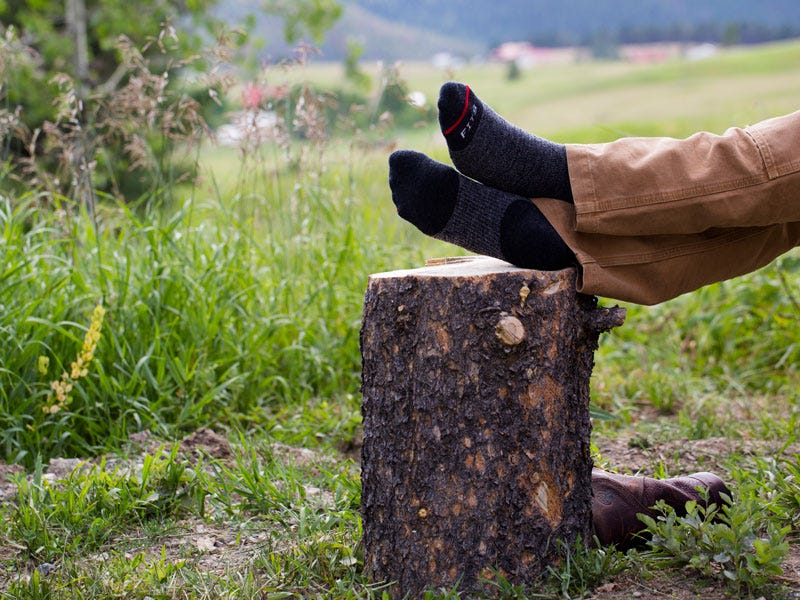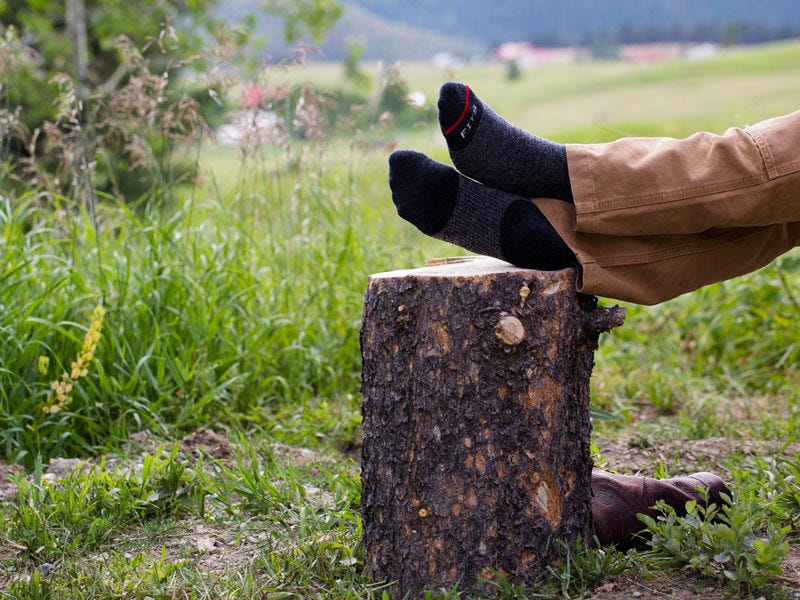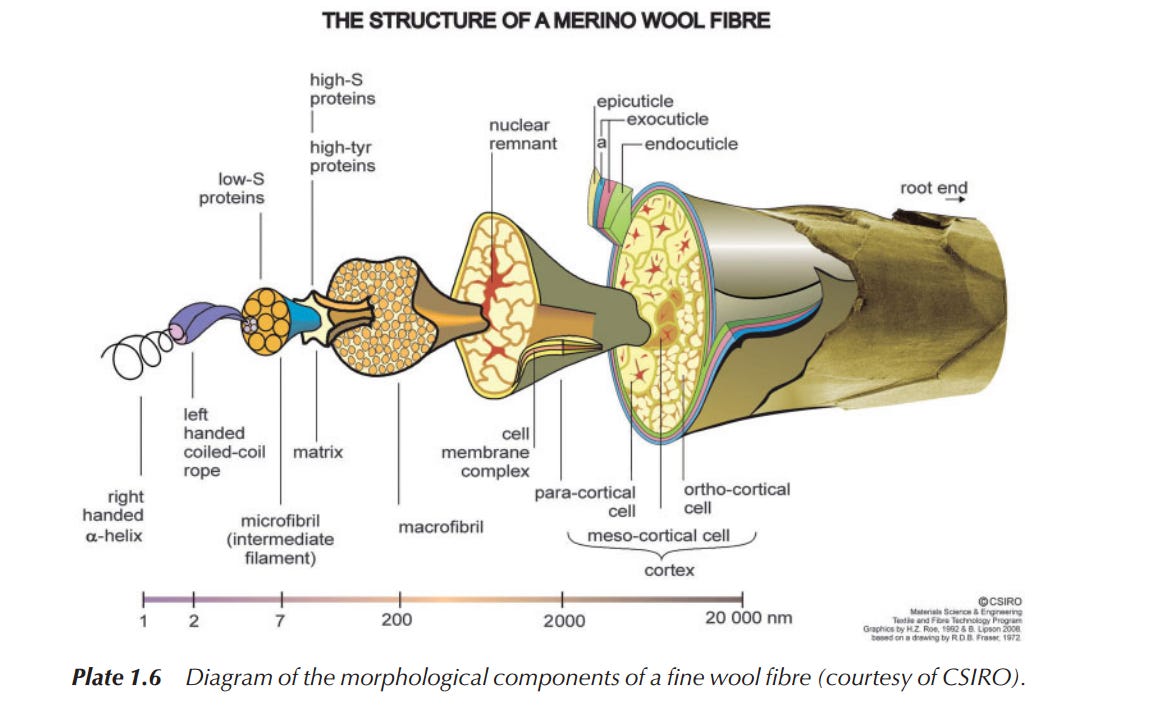Why do you need wool socks?

Socks: the thing that's ruined a thousand hikes... and a thousand camping trips.

For outdoor enthusiasts that have faced the beast of bad socks (and have had the bloody blisters to prove it), you already know how important your socks are to enjoying your time outdoors.
For the rest of you, as yet unbroken (or should we say "unblooded"?), outdoor enthusiasts... you may have just stumbled across a blog that saves your feet and your experience outdoors.
If you're wondering, "Why are socks so important, and why should I pay so much more for ONE pair... when I can get 4 pairs for under $10?"
Then this is EXACTLY where you need to be.
Men: Check these socks out to see what I am talking about... and for the ladies, these.
Good socks are expensive for a reason--they're built to fit your foot and do a job those "normal," 6-pair-a-pack cotton, white socks can only dream about doing, and that's protect your foot across a wide range of high-action, high-impact activities we get up to here in the Northwest like hunting, hiking, biking, cave diving... the list is endless.
While cotton socks have their place--they're light and they're cheap (I have an entire drawer of them for the gym and to wear under my slippers), the socks I am talking about are those 10-20 "dollars for a single pair(?!)" kind of socks.
And, in actuality, there are gym socks made of merino wool-- a common misconception is that all wool socks are "hot" socks. The truth is they breathe easier than cotton socks and, therefore, keep your feet COOLER than cotton which is not as hydrophobic as a well built pair of merino wool socks.
In the long run, merino wool gym socks would probably be a great investment as well: "The cheapest pair of socks are the ones you pay $20 dollars for and wear every day."
So, what kinds of "expensive socks" are there? There are poly socks, poly/wool blends, crew socks, knee socks, heavy wool socks, compression socks, synthetic socks... cue the voice from Forrest Gump. And, like shrimp, socks in general get pretty complicated once you actually open up the topic... so today, to keep us focused (me, too) -- I'm talking about my favorite pair of expensive socks: merino wool socks.
What's up with merino wool?
What sets Merino wool apart? They're warmer, they're more durable and they last much, much longer than cotton socks.
Wool has a natural crimp in it that allows the material to trap more "dead air" than any other fiber, and dead air means superior insulating ability.
Cool, but that's true of old school wool as well as Merino, right? Right, but Merino wool is able to ditch the itch thanks to its much smaller diameter.
They get scientific with their sheep down there in NZ. Check out this video.
The size of the fibers are smaller than traditional wool this means they have a greater give and flex, so they bend and don't irritate your skin like harder, thicker "old school" wool.
Antimicrobial Merino Wool: Why these socks don't stink
Let's get one thing straight... clothes only smell if they get wet. If you wear the same pair of shorts to the gym for 6-7 days, you'll see what we mean by "smell." But why is that? Simple: bacteria.
Bacteria proliferate and grow, like mushrooms, in moist, dark areas. So if you wear the same clothes every day and you don't sweat, they won't stink... but when you're out hiking or enjoying life outside--chances are you're going to get wet, and you're going to sweat. The good news?
Merino wool is both "hydrophobic" and "antimicrobial." That means it's double stink-proof. Because the fibers are more compact, and unlike synthetic materials, that "compact" is actually porous on the microscopic level.
Being porous means the vapors from your skin can escape faster and thereby DRY faster--serving two purposes: keeping you cool (or warm) while also preventing a moist place for bacteria to grow like cotton and some less expensive synthetic materials. Another strength over synthetics: because the fibers are so porous, they can absorb up to 30% of their own weight in moisture ten times as much as most synthetic fibers without feeling damp or clammy.
Another bonus of Merino wool? Lanolin. What's lanolin? Wool-wax or wool-fat.
Like other fatty-acids, lanolin is composed of a long chain of carbon atoms connected to a carboxyl group (COOH). That O stands for oxygen which actually attracts water (polar), but since those are hooked up to carbon and hydrogen, they become non-polar and don't want to connect with another molecule.
That's why if you pour olive oil in water (or get sweat in your Merino wool socks), the oil will will rise to the top of the water and they won't mix (and that sweat will be wicked away from your feet to dry).
Want to know a fancy way to say "wicks water and stays drier longer?" Say-- "This material is hydrophobic."
Now why are these socks "antimicrobial" and "anti-fungal?" Besides keeping the water from remaining next to your body where the warmth and the moisture will encourage bacteria growth--lanolin is also devoid of nutrients those bacteria need to survive.
No water and no food = no bacteria growth, and no "stink" growing on your clothes.
So that's the deal with WHY you can wear them forever, but why are Merino socks so expensive, you ask again, pointedly.
Well... this is why.
The law of supply and demand... + animal husbandry
So we know WHAT merino wool is... but why is it so expensive??? Well, imagine the sheep from the video above. That's an animal. It takes feed and people and TIME to raise that sheep and to make sure his/her hair is in pristine condition... and then you harvest that wool.
People do that work!
It takes land, resources, time (not to mention the extensive breeding costs associated with getting the best animals in the best pastures).
Want to know another secret about your socks? Merino wool, because it grows on an animal, and that animal is influenced by the weather, and because the weather has patterns... well, let's make it simple.
Sheep grow their coats out in winter to protect them from the cold.
So, not only does it take a long time to grow that fur... it only grows for 6 months a year! (It does grow in the summer.... but it grows much slower because the animal doesn't need too MUCH of it.)
Price disparity between the same "merino wool" items--what gives?
So, cool, we get the idea behind the supply and demand theory, it takes a long time to grow merino wool bred specifically for smaller diameter fibers--so why are SOME merino wool items more expensive than others?
This has to do with a tenant that we hold firmly to at North 40 Outfitters, and that's the pursuit of animal husbandry and the health of animals and preservation of traditions.
How is animal husbandry related to the price of socks, you ask? Directly, I say.
You need to know where your wool is sourced from for two reasons--higher quality wool is more expensive because it comes from free living, alpine sheep that are not factory farmed. Let me translate that back to my original point about price: the land costs money, the feed and water costs money and the time to let that wool to grow naturally (and layer the nutrients needed to make it durable and warm) costs money.
Let us enter into the life of a single thread of merino wool, and examine the complexity therein.

That single thread grows from the body of the sheep. The body of the sheep is a matrices where many factors meet: what that sheep eats, the nutrients available, the sunlight, the exercise and the body structure of that sheep all go to produce the nutrients inside the wool fibers that you wear.
Imagine that fiber ^ grown in two different conditions: one in a free range alpine environment with sunlight, exercise and nutrient rich feed, and the other grown in a factory where that sheep is forced to grow wool year round on food produced to increase that growth rate.
All those nutrients go to compose that fiber, and if they are lacking, if they are force grown--you can be sure they will be weaker... and cheaper. Cheaper merino wool is cheaper for a reason, and it will not last as long as wool grown naturally in a free range environment.
So how do you know if your socks are free range? Ask. If the brand and/or supplier doesn't know where your socks are sourced from--that's your answer.
Check out our entire selection of socks online here.
So the next time you see a pair of merino socks in our store, or anywhere online or in person when you're shopping... now you will understand the price, and the product that you are paying for.

Still have a question? Use the form below and we'll get right back to you.
Like this content? Join our email ranks by clicking here.
